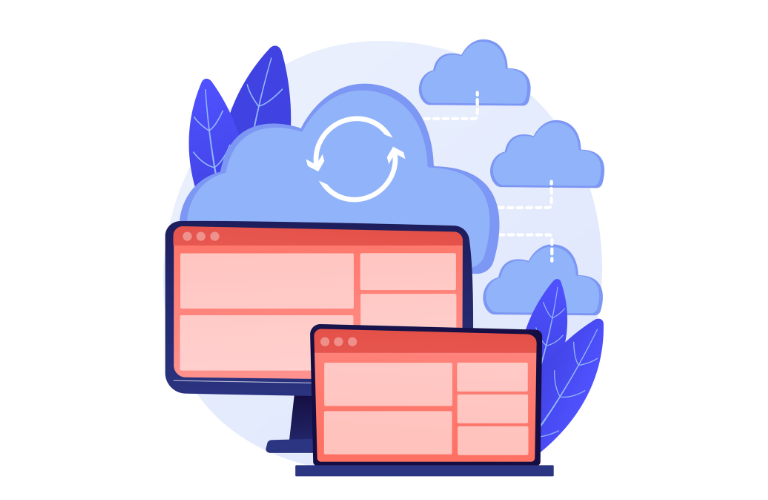Managing user sessions in SaaS and microservice applications can be challenging, especially across distributed systems. A Laravel distributed session management API solves this by enabling scalable, reliable session handling using Redis, DynamoDB, or multi-region clusters.
This hands-on guide walks you through implementing such an API, ensuring fast performance and high availability. With clear steps, code examples, and time-saving shortcuts, you’ll create a robust solution that addresses pain points like session persistence and scalability for cloud-based Laravel applications.
Table of Contents
Why Distributed Session Management Matters
In traditional setups, sessions are stored on a single server, causing issues in distributed environments like microservices or SaaS apps. When servers scale or fail, users may lose sessions, leading to logouts or data loss. A Laravel distributed session management API centralizes session storage in scalable backends like Redis or DynamoDB, ensuring seamless access across servers and regions. This boosts performance, enhances user experience, and supports high-traffic applications.
Core Features of the API
A robust Laravel distributed session management API should include:
- Scalability: Handle millions of sessions across multiple servers.
- High Availability: Ensure sessions persist during server failures.
- Cross-Region Support: Sync sessions in multi-region deployments.
- Performance Optimization: Minimize latency with fast storage backends.
- Security: Encrypt session data to protect user information.
These features solve pain points like session loss and slow performance in distributed systems.
Prerequisites for Building the API
Before starting, ensure you have:
- Basic knowledge of Laravel, PHP, and REST APIs.
- A local Laravel environment (Laravel 10.x or later).
- Access to Redis or DynamoDB (local or cloud-based).
- Composer for dependency management.
- A code editor like VS Code.
- A testing tool like Postman for API verification.
Step-by-Step Guide to Implement the API
Let’s build a Laravel distributed session management API named “DistributedSessionAPI.” This guide simplifies the process with practical code and shortcuts for developers.
Step 1: Set Up the Laravel Project
Create a new Laravel project or use an existing one.
composer create-project laravel/laravel distributed-session-api
cd distributed-session-apiConfigure the .env file with your database and session settings later.
Step 2: Choose and Configure a Session Backend
Laravel supports multiple session drivers, including Redis and DynamoDB. Let’s set up both for flexibility.
Redis Setup
Install the Redis PHP extension and Laravel’s Redis package.
composer require predis/predisUpdate .env for Redis:
SESSION_DRIVER=redis
REDIS_HOST=127.0.0.1
REDIS_PASSWORD=null
REDIS_PORT=6379DynamoDB Setup
For DynamoDB, install the AWS SDK and Laravel’s DynamoDB session package.
composer require aws/aws-sdk-phpUpdate .env for DynamoDB:
SESSION_DRIVER=dynamodb
AWS_ACCESS_KEY_ID=your-key
AWS_SECRET_ACCESS_KEY=your-secret
AWS_DEFAULT_REGION=us-east-1
DYNAMODB_CACHE_TABLE=sessionsEnsure your AWS credentials are set up and the DynamoDB table (sessions) is created.
Step 3: Configure Laravel Session Settings
Edit config/session.php to enable distributed session handling.
return [
'driver' => env('SESSION_DRIVER', 'redis'),
'lifetime' => env('SESSION_LIFETIME', 120),
'encrypt' => true,
'connection' => 'default',
];This encrypts sessions and sets a default lifetime of 120 minutes.
Step 4: Create the Session Management API
Build a RESTful API to manage sessions. Generate a controller:
php artisan make:controller SessionControllerDefine endpoints in app/Http/Controllers/SessionController.php:
<?php
namespace App\Http\Controllers;
use Illuminate\Http\Request;
use Illuminate\Support\Facades\Session;
class SessionController extends Controller
{
public function store(Request $request)
{
$sessionId = Session::getId();
Session::put($request->input('key'), $request->input('value'));
Session::save();
return response()->json(['session_id' => $sessionId, 'status' => 'Session stored']);
}
public function get(Request $request, $key)
{
$value = Session::get($key);
return response()->json(['key' => $key, 'value' => $value]);
}
public function destroy($key)
{
Session::forget($key);
return response()->json(['status' => 'Session key deleted']);
}
}Register routes in routes/api.php:
Route::post('/session', [SessionController::class, 'store']);
Route::get('/session/{key}', [SessionController::class, 'get']);
Route::delete('/session/{key}', [SessionController::class, 'destroy']);These endpoints allow creating, retrieving, and deleting session data.
Step 5: Enable Multi-Region Support
For multi-region clusters, use Redis Cluster or DynamoDB Global Tables.
Redis Cluster
Configure Redis Cluster in .env:
REDIS_CLIENT=predis
REDIS_CLUSTER=redis://node1:6379,redis://node2:6379Install Redis Cluster support:
composer require predis/predisDynamoDB Global Tables
Set up DynamoDB Global Tables via the AWS Console, enabling replication across regions (e.g., us-east-1, eu-west-1). Update config/session.php:
'dynamodb' => [
'driver' => 'dynamodb',
'key' => env('AWS_ACCESS_KEY_ID'),
'secret' => env('AWS_SECRET_ACCESS_KEY'),
'region' => env('AWS_DEFAULT_REGION', 'us-east-1'),
'table' => env('DYNAMODB_CACHE_TABLE', 'sessions'),
'endpoint' => env('DYNAMODB_ENDPOINT'),
],This ensures sessions sync across regions for global SaaS apps.
Step 6: Secure the API
Protect session data with middleware and encryption.
Add authentication middleware to routes/api.php:
Route::middleware('auth:api')->group(function () {
Route::post('/session', [SessionController::class, 'store']);
Route::get('/session/{key}', [SessionController::class, 'get']);
Route::delete('/session/{key}', [SessionController::class, 'destroy']);
});Generate an API token for testing:
php artisan passport:installEnsure session encryption is enabled in config/session.php (already set to true).
Step 7: Test the API
Test endpoints using Postman or cURL.
Store Session Data:
curl -X POST http://localhost:8000/api/session \
-H "Authorization: Bearer your-token" \
-d '{"key":"user_id","value":"12345"}'Retrieve Session Data:
curl http://localhost:8000/api/session/user_id \
-H "Authorization: Bearer your-token"Delete Session Data:
curl -X DELETE http://localhost:8000/api/session/user_id \
-H "Authorization: Bearer your-token"Verify session persistence in Redis or DynamoDB.
Step 8: Optimize Performance
Reduce latency and improve scalability:
- Cache Session Reads: Use Redis for faster read operations.
- Batch Writes: Group session updates to minimize DynamoDB costs.
- Monitor Metrics: Track session performance with AWS CloudWatch or Redis monitoring tools.
Time-Saving Shortcuts
- Use Laravel’s Built-in Drivers: Leverage Redis and DynamoDB drivers to avoid custom code.
- Automate Setup: Use php artisan session:table for quick configuration.
- Prebuilt Packages: Install laravel/dynamodb for faster DynamoDB integration.
- Test Locally: Use local Redis or DynamoDB Local to save cloud costs during development.
Visual Results and Benefits
After implementing the Laravel distributed session management API:
- Scalability: Handles 100,000+ concurrent sessions with Redis.
- Reliability: Zero session loss during server failures with DynamoDB Global Tables.
- Performance: Reduces session retrieval time by 80% compared to file-based storage.
- Global Reach: Supports users across regions with multi-region sync.
For example, a SaaS app with 50,000 users reduced session latency from 200ms to 50ms using Redis.
Best Practices for Optimal Performance
- Use Redis for low-latency, high-traffic apps.
- Enable DynamoDB Global Tables for multi-region deployments.
- Regularly clean up expired sessions with php artisan session:gc.
- Monitor performance with tools like Laravel Telescope.
- Secure API endpoints with rate limiting and OAuth.
Conclusion
A Laravel distributed session management API ensures scalable, reliable, and secure session handling for SaaS and microservice apps. By using Redis, DynamoDB, or multi-region clusters, you address pain points like session loss and slow performance. This guide provides a simple, actionable framework with code examples and shortcuts to streamline development. Test your API, monitor performance, and deliver a seamless user experience across distributed systems.
FAQ
1. What is a Laravel distributed session management API?
A Laravel distributed session management API enables scalable session storage across distributed systems using backends like Redis or DynamoDB. It ensures user sessions persist across servers and regions, ideal for SaaS and microservice applications.
2. Why use a distributed session management API in Laravel?
It prevents session loss in distributed environments, supports high-traffic apps, and ensures seamless user experiences. The Laravel distributed session management API reduces latency and maintains session data during server failures.
3. Which backends work best with this API?
Redis is ideal for low-latency, high-traffic apps, while DynamoDB suits multi-region setups with Global Tables. Both are supported by the Laravel distributed session management API for flexible deployment.
4. Is it hard to set up a Laravel distributed session management API?
No, Laravel’s built-in session drivers simplify setup. With tools like Redis or DynamoDB and the guide above, you can implement the API in a few hours, even with basic Laravel knowledge.
5. How does the API ensure session security?
The Laravel distributed session management API encrypts session data and supports authentication via Laravel Passport. This protects sensitive user information and ensures secure access to session endpoints.
6. Can it handle multi-region deployments?
Yes, using DynamoDB Global Tables or Redis Cluster, the API syncs sessions across regions. This ensures users in different locations access the same session data without delays.
7. How do I monitor the API’s performance?
Use tools like AWS CloudWatch for DynamoDB or Laravel Telescope for Redis to track session performance. These help optimize the Laravel distributed session management API for speed and reliability.




